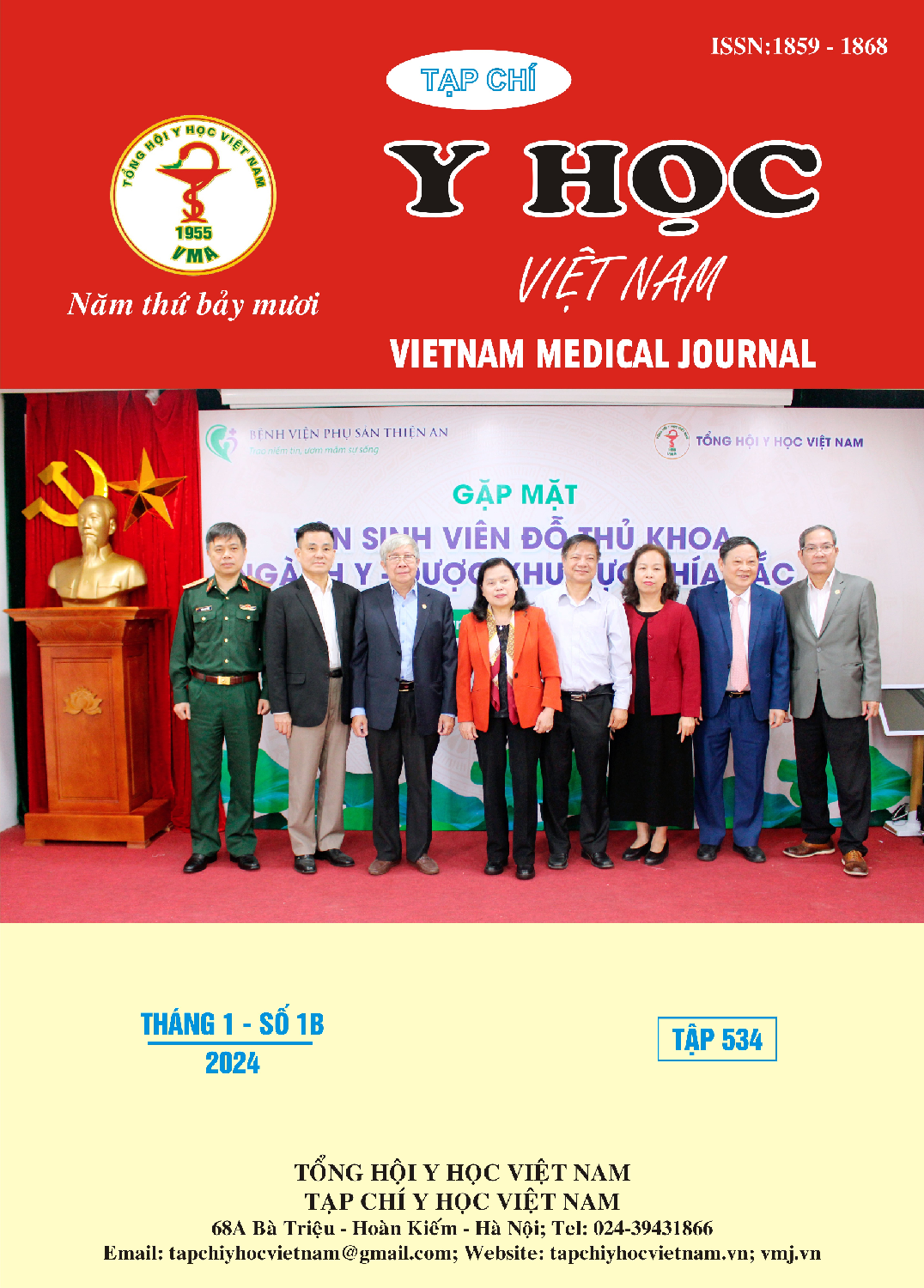OUTCOMES AFTER FIXATION OF ACUTE ACROMIOCLAVICULAR DISLOCATION BY HOOKPLATE AT MILITARY HOSPITAL 103
Main Article Content
Abstract
Purpose: The purpose of our study is to evaluate clinical outcomes following treatment of acute acromioclavicular dislocations by hookplate. Material and methods: Between January 2018 to may 2023, 35 Patients with Rockwood type III-V lessions received surgical treatment using hook plate. at Military hospital 103 from Jannuary 2018 to may 2023. Methods: Prospective, clinical trials without control group, cross-sectional description combined with longitudinal follow-up, clinical and radiographic follow - up. For clinical follow up, a standardized functional shouder assessment with the Constant-Murley score. Results: 35 patients (26 men/9 women) at average 45,43 ± 11,23 years old (25 -68) were included in the present study. There are 25 patients with Rockwood type V and 15 patients type III. The result of reduction ACJ was 100%. Long following – up 26/35 Patients. The mean follow-up period in this study was 20.51 ± 11.75 months (8 – 47 months). The average Constant-Murley Score 90.81 ± 4.19 (82 – 97) at the time of last follow-up. The CS level achieved 100% good to excellent. Conclusion: Reduction and fixation surgery with lock hook plate in the treatment of acute ACJ dislocation is one of the good methods with the ability to reduce and rehabilitate good function of the joint, so that the patients can return to activity and work soon.
Article Details
References
2. Carofino B.C., Mazzocca A.D., Surgery E. (2010) The anatomic coracoclavicular ligament reconstruction: surgical technique and indications. Journal of Shoulder. 19(2):37-46.
3. Turgut M.C., Semis H.S., Yamak K., et al. (2022) Evaluation of Patients with Acromioclavicular Joint Separation Treated Using the Clavicular Hook Plate. Ortopedia, Traumatologia, Rehabilitacja. 24(2): 73-78.
4. Lee Y.S., Kim D.S., Jung J.W., et al. (2023) Risk factors of loss of reduction after acromioclavicular joint dislocation treated with a hook plate. Journal of Orthopaedic Traumatology. 24(1):10.
5. Koukakis A., Manouras A., Apostolou C.D., et al. (2008) Results using the AO hook plate for dislocations of the acromioclavicular joint. Expert review of medical devices. 5(5):567-572.
6. Lin H.Y., Wong P.K., Ho W.P., et al. (2014) Clavicular hook plate may induce subacromial shoulder impingement and rotator cuff lesion-dynamic sonographic evaluation. Journal of orthopaedic surgery research. 9: 1-9.
7. Chen Y.T., Wu K.T., Jhan S.W., et al. (2021) Is coracoclavicular reconstruction necessary in hook plate fixation for acute unstable acromioclavicular dislocation? BMC Musculoskeletal Disorders. 22:1-10.
8. Nguyễn Thành Tấn, Trần Khắc Duy. (2023) Đánh giá kết quả điều trị trật khớp cùng đòn bằng nẹp khóa móc không tái tạo dây chằng quạ đòn. Tạp chí Y học Việt Nam. 524(1A):33 - 37.


